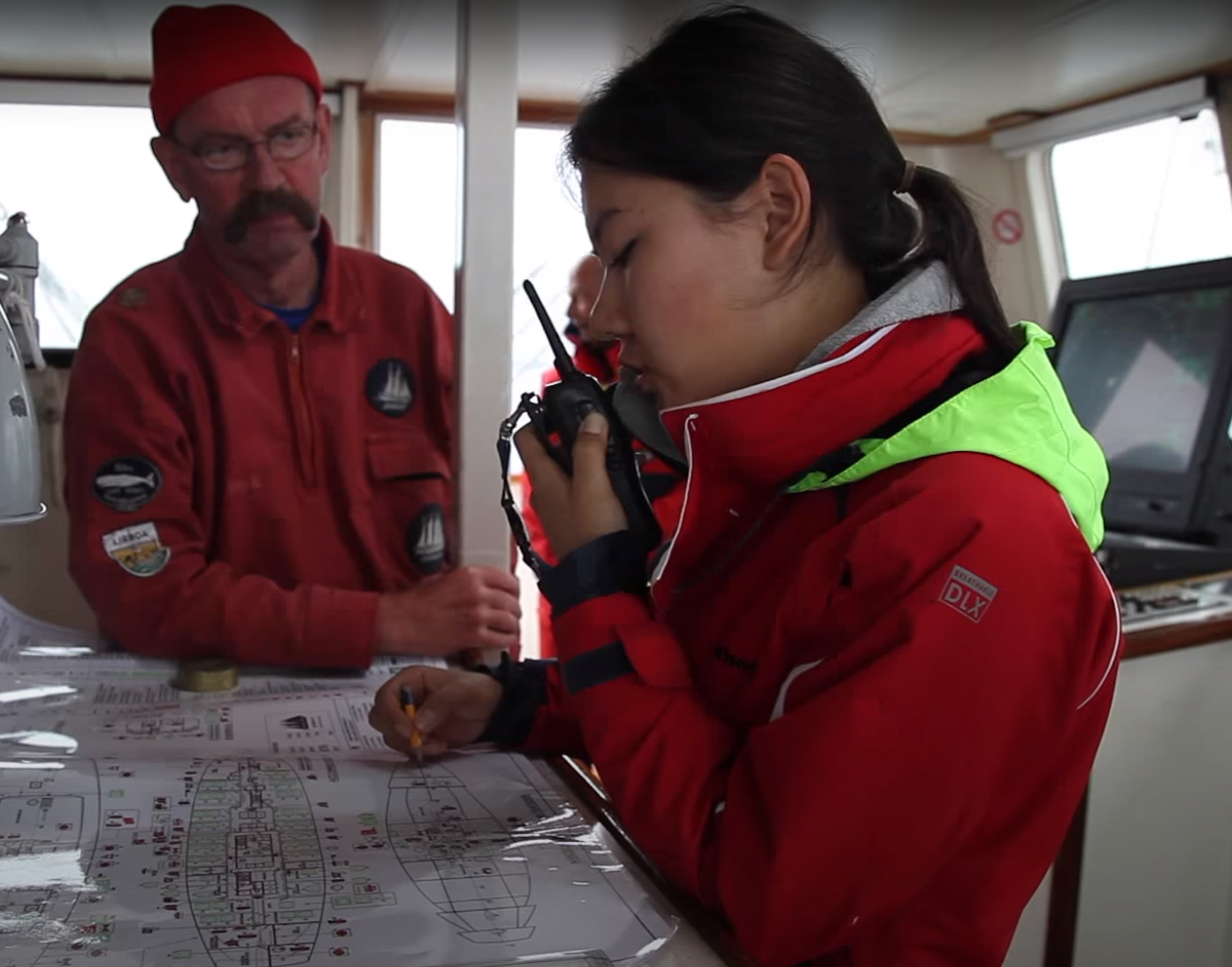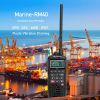You are in trouble in the sea, you need rescue

Remember if you can’t call for help we can’t rescue you.
A VHF radio is your best two-way communication device at sea. With a VHF radio, calls can be received by Maritime Coastguard and by vessels which may be in position to give immediate assistance. A VHF marine radio also helps ensure that storm warnings and other urgent marine information broadcasts are received.
Off coastal water, a VHF radio should be your first communication in an emergency. With a few exceptions, even a portable VHF radio can give you up to 50kms of coverage. Even better, on channel 16, a trained operator will take your emergency call within a minute and begin co-ordinating your rescue.
A distress beacon is the ideal back-up device
A distress beacon (EPIRP or PLB) will greatly increase your chances of rescue. It can send a distress signal to a search and rescue satellite when you activate it but you can’t speak or give any details of what has happened.
Use Channel 16 in an emergency
Channel 16 is the international distress channel for VHF. In New Zealand, it’s monitored 24/7 by Maritime New Zealand’s Maritime Operations Centre, which is staffed by experienced radio operators. Be aware though that a VHF radio has a range limit and is subject to “dead spots” in difficult terrains, like Fiordland, that block your line of sight to a repeater. That’s why we recommend taking a beacon as well as your VHF radio.
Four simple steps
Follow these four simple steps to make sure that your VHF radio is ready in an emergency.
- Get the right VHF waterproof radio for your boating activity
The best advice is to always have a handheld, waterproof VHF radio on your person, preferably attached to your lifejacket. A fixed VHF radio has a greater range and is better for regular communication, but you won’t be able to access it if it's water damaged in a capsize. Carry both a handheld and a fitted VHF radio on your vessel. - Complete a Maritime VHF Radio Operator Certificate course
Knowing how to use a marine VHF radio correctly and with confidence is vital in the event of an emergency. To operate a maritime VHF radio you are required to hold a VHF Radio Operator Certificate, unless you are transmitting in an emergency or in distress. - Get a call sign
A call signfor your boat is the best way of making sure each radio transmission is individually identifiable.
Your call sign is registered on a national search and rescue database. This means search and rescue authorities can access information about your vessel to help locate you faster in an emergency. - Each time you go boating, check the VHF radio coverage, and take two waterproof ways to call for help
VHF radios have excellent coverage in most coastal regions, but are not reliable in many inland waterways. Before going boating ask a local boatie or Coastguard. They will know where there is no or little VHF coverage due to the coastal terrain.






